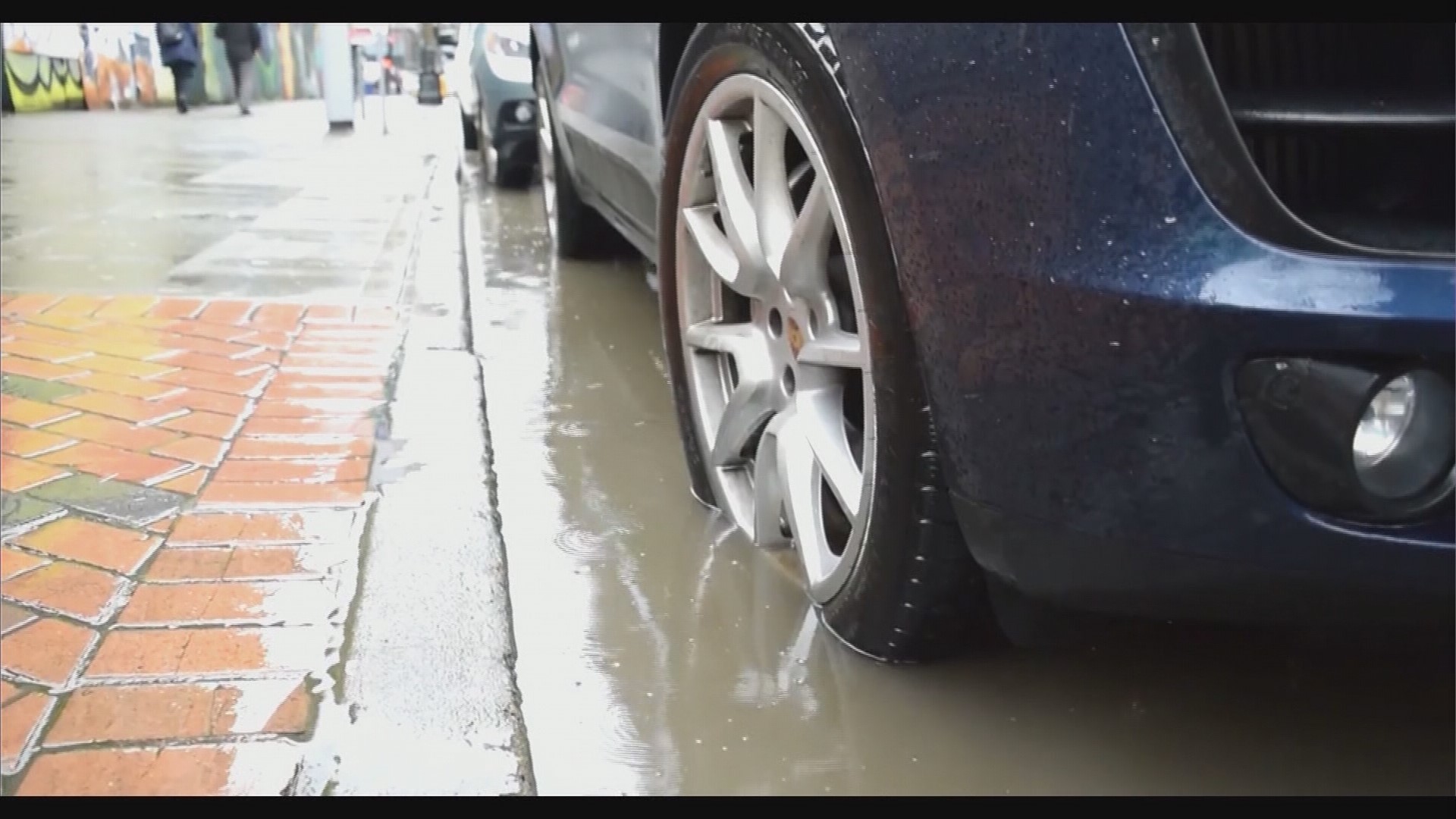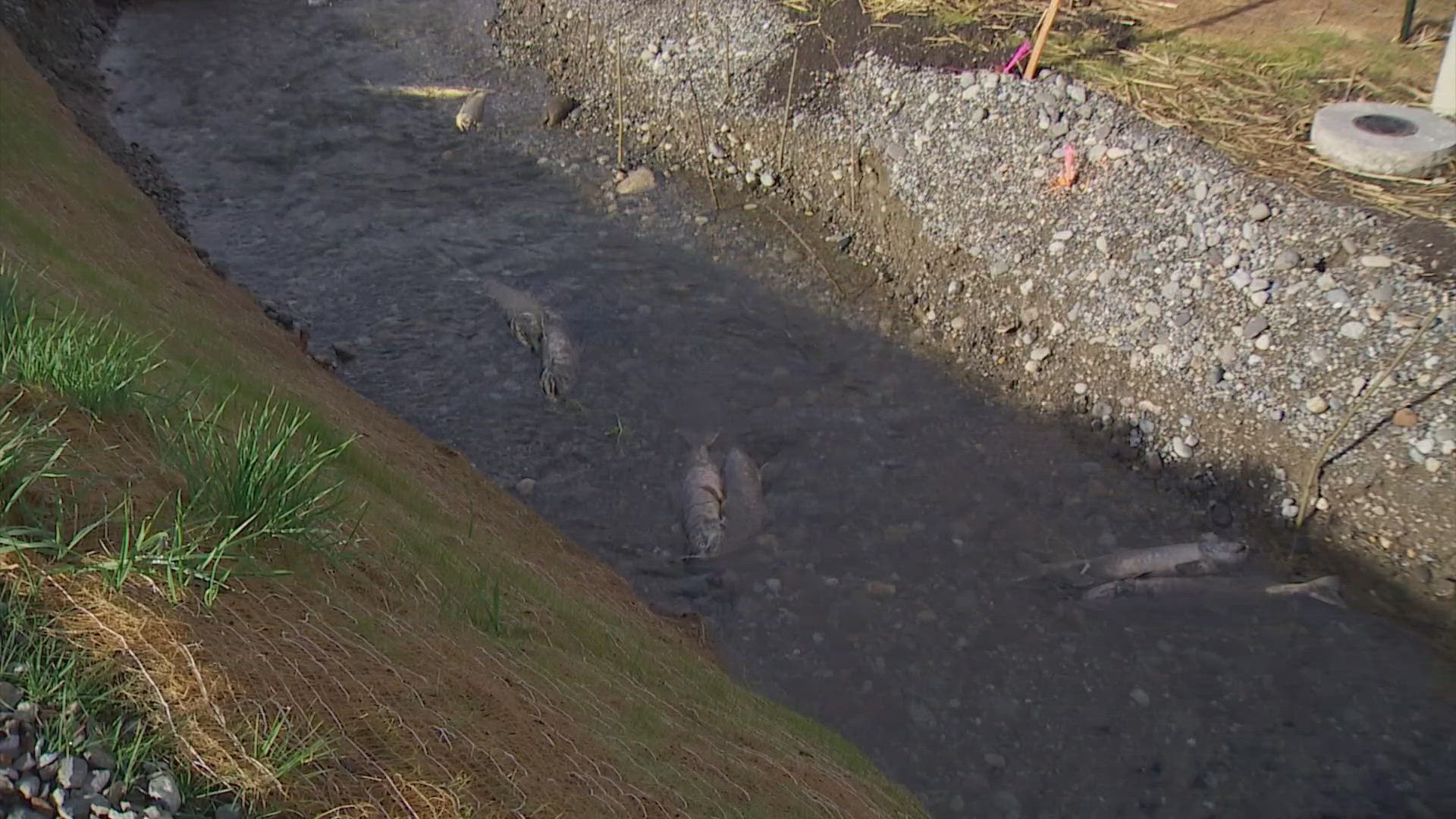Stormwater runoff is the number one toxic pollutant in Puget Sound, and a scorecard released by Puget Soundkeeper Alliance in a joint venture with the Washington Environmental Council shows just how well, or poorly, cities and counties are doing at reducing stormwater pollution through low impact development.
"The regulations for changing the way we develop land were first published five years ago," said Puget Soundkeeper Alliance Executive Director Chris Wilke. "This is a transparent assessment of the entire region and how we're doing."
Stormwater is a chemical soup that causes coho salmon to suffocate and die. It is filled with toxins that build up in orca blubber and poison the whales when it's metabolized.
The scorecard judges 81 municipalities by five categories of low impact development. Fifteen-percent totally failed. Thirty-eight percent made minimal improvements. Forty-seven percent either brought their codes up to standards required by the Clean Water Act or went beyond requirements.
How did your city or county do? You can see at this link to naturesscorecard.com. Here are the five categories by which municipalities were judged, as listed on the website:
SOFTENING OUR FOOTPRINT: As we increase the amount of hard, waterproof surfaces, we create more stormwater. We need to rethink our community footprint. This doesn't have to mean we lose comfort and enjoyment of our spaces, but we do need to use more landscaping, narrower walkways, and taller buildings.
BUILDING WITH CARE: Protecting our lands' native plants and soils helps water move more slowly by allowing the rain to soak into the earth instead of rushing across the surface and collecting a heavy load of pollution. By building around native plants and caring for the underlying structure of a site, development will be more flood-resistant and support healthy communities in the long term.
IMPROVING FILTRATION: Permeable pavement supports vehicles yet allows rainwater to pass through the paved surface into the soil below and reduces how much stormwater we create. Permeable pavements can be used in sidewalks, road shoulders, parking lanes, and other parking areas that do not receive heavy traffic where traditional pavements are needed. Innovative materials are being developed right here in Washington – so we have the local technology to transform our landscape's surfaces.
GROWING THE RIGHT TREES: Some trees, like cedars and firs, are better suited for our Pacific Northwest environment and do a much better job of helping clean and slow polluted stormwater runoff than other trees. Others, like holly, may not work with the soils, could crowd out the other plants, and might create seasonal maintenance challenges.
MAINTAINING BUFFERS: Critical areas such as shorelines, wetlands, and other sensitive areas need strips of vegetation (called buffers) to protect their natural systems from the impacts of development and pollution. This includes low-impact development principles, such as retaining native plants, which helps to slow and clean polluted stormwater runoff. LID principles and practices have multiple benefits and should be linked throughout the code to recognize these values.
While some cities only received one checkmark, or like Redmond got zero checkmarks, Seattle, and several other municipalities got a green star for extra effort.
"One thing we did because of this process is look at how you can use these kinds of technologies actually right in the public right of way, right next to the road, and integrated that into our guidance for developers," said Seattle Green Infrastructure Planner Pam Emerson.
Puget Soundkeeper Alliance and Snohomish County also recently filed a consent decree resolving a Clean Water Act case about the county's management of polluted stormwater runoff. According to a press release, the county agreed to update its development code to include expanded requirements for low-impact development techniques.
"Low-impact development, or LID, uses native plants and drainage solutions like rain gardens and permeable pavement to prevent stormwater runoff from carrying pollution into creeks, streams, rivers, lakes and bays. These techniques are proven to be cost-effective and can also protect against flooding during heavy rainfall events. Snohomish County's code now requires compliance with new statewide requirements for LID, and promotes the use of LID – an outcome that all parties and the public can celebrate," it reads.


